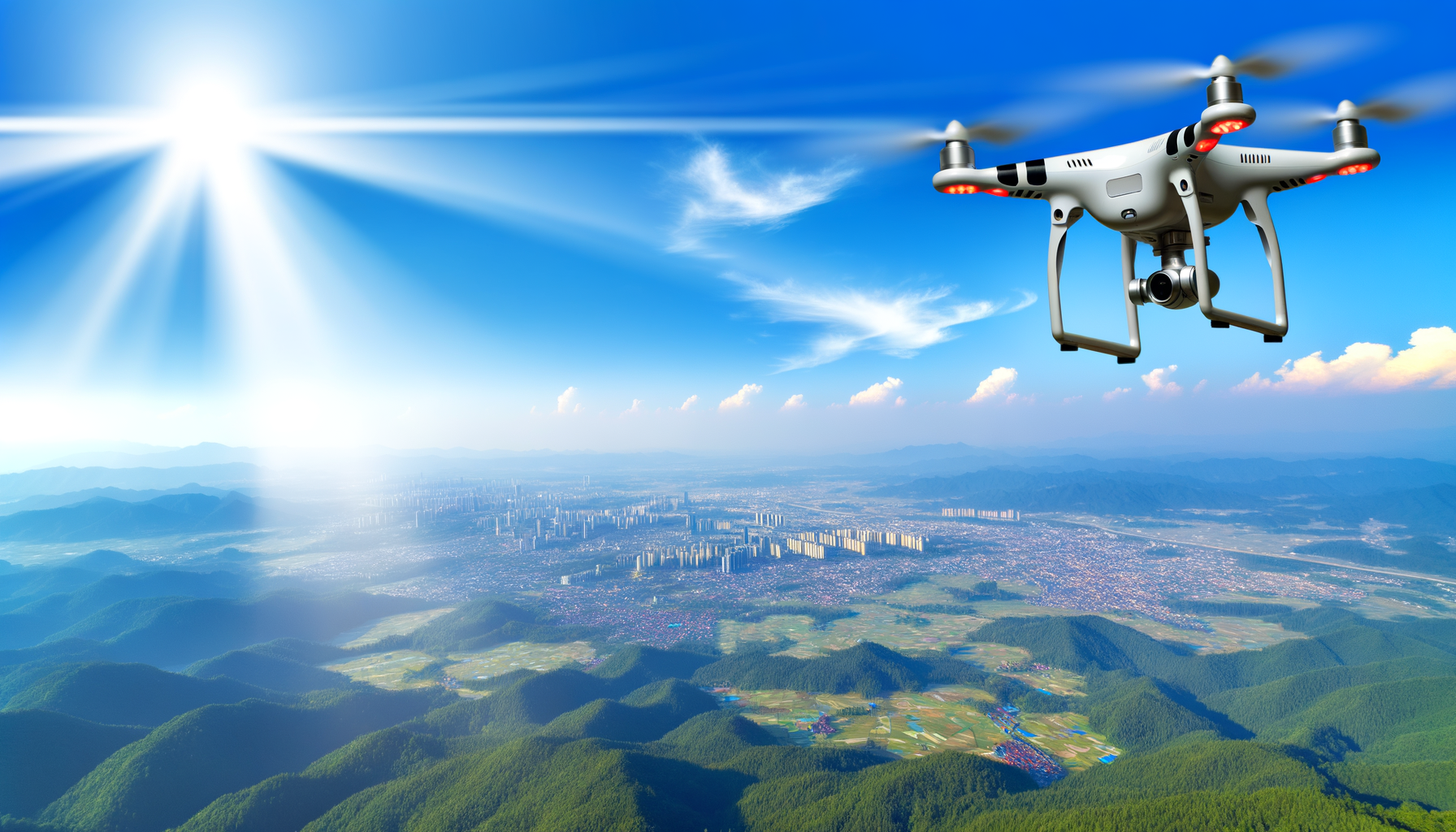Elevating Remote Insights: The Rise of Drones in Surveying
 Shreya Sulkunde
Shreya Sulkunde
Introduction: A Skyward Leap in Modern Surveying
In the dynamic landscape of technological advancements, few innovations have captured the imagination of industry and public alike as comprehensively as drones. Once confined to military applications, these unmanned aerial vehicles (UAVs) have transcended their original purpose, branching out into a myriad of sectors, with surveying and inspection activities among the most promising.
Drones are revolutionizing traditional methods of reconnaissance, reimagining how we interact with elevated terrains, expansive stretches of infrastructure, and locations that, due to various impediments, have previously eluded comprehensive human inspection. This technological transition is driven by several essential factors, supporting a trend that sets new benchmarks for efficiency, accuracy, and safety.
1. Efficiency & Speed in Data Collection
The utility of drones in speeding up data collection processes is twofold. First, their aerial perspective allows for rapid movement across large areas without restriction, drastically reducing the time necessary for an inspection that would typically mandate significant ground labor. Second, drones are capable of high-frequency data collection, capturing photos and video footage at intervals suited to specific project needs.
In industries where timing is critical, such as construction, a drone's ability to gather round-the-clock data allows for real-time project updates, ensuring that schedules remain tight and deadlines are met more reliably than ever before assumed possible.
2. Enhanced Accuracy and Precision
Surveying drones employ high-resolution cameras and advanced sensors equipped with GPS technology, enabling them to gather detailed 3D maps and models with a level of precision that manual surveying makes challenging to achieve.
Utilizing technologies such as LIDAR (Light Detection and Ranging), drones can capture detailed terrain profiles, penetrating through vegetation to build accurate landscape models—all without the need for invasive ground-level access. This not only minimizes labor but also eliminates potential human errors, ensuring data quality and representation remain uncompromised.
3. Reduced Risk and Improved Safety
Conducting manual inspections often poses significant safety risks, particularly in potentially hazardous environments like high-rise buildings, bridges, and power lines. Deploying drones averts the need for personnel to physically access dangerous sites, dramatically reducing workplace injury risks and contributing to overall project safety.
Moreover, drones offer a non-invasive alternative for infrastructure inspections and monitoring, eliminating the need to interrupt operations, which is a frequent byproduct of conventional methods—ultimately resulting in amplified cost-effectiveness and operational efficiency.
4. Cost-Effectiveness and Resource Allocation
While the initial acquisition and setup of drone technology does imply investment, financial analysis consistently reveals long-term cost reductions. This is due to diminished manpower requirements, reduced time allocations, and a notable decrease in vehicle-related operational expenses.
Reallocating these resources enables organizations to focus budgets towards strategic development rather than logistical concerns, effectively offering more for less. This economic feasibility encourages broader adoption across industry sectors, further driving the development and diversification of drone applications.
5. Versatility and Innovation Flexibility
One of the key drivers propelling drone adoption is their adaptability. Customizable and scalable, drones can be outfitted with an array of sensors, cameras, and tools tailored to task-specific needs. Whether for agricultural mapping, infrastructure inspection, or environmental surveying, drones offer a tailored solution within a compact and dynamic framework.
Moreover, with the advent of drone-related software, data management has taken significant strides. Advanced analytical tools and real-time processing applications synergize with hardware capabilities to offer comprehensive, actionable insights—heralding a new era of data-driven decision-making.
6. Regulatory Evolution and Public Acceptance
Regulatory frameworks surrounding drone operation have evolved in recent years, encouraging safer, standardized practices across the board. Continual advancements in drone technology have led to enhanced public trust, magnifying overall acceptance and emphasizing their practical benefits over potential privacy concerns.
As more countries adopt policies that support drone usage in commercial sectors, the potential for innovation and application expansion increases exponentially. Recognizing the potential drone technology offers, global leaders are more apt to embrace regulatory adaptations in alignment with technological growth.
Conclusion: The Future of Drones in Survey and Inspection
The trajectory of drone technology is marked by rapid development and integration across key industries. The drivers propelling this growth efficiency, accuracy, cost savings, safety, versatility, and supportive regulations collectively underscore a transformative shift toward aerial inspection and surveying solutions.
As technological capabilities continue to evolve, advancing drones further into the realms of automation and artificial intelligence, the potential applications will expand even further, cementing drones' role as an indispensable asset in modern surveying and inspection industries.
In contemplating the broader implications, it becomes clear that drones are not merely a temporary innovation; they are the heralds of enduring change—an emblem of humanity's persistent endeavor towards progress and innovation.
Explore Comprehensive Market Analysis of Reconnaissance & Inspection Drones Market
Source -@360iResearch
Subscribe to my newsletter
Read articles from Shreya Sulkunde directly inside your inbox. Subscribe to the newsletter, and don't miss out.
Written by
